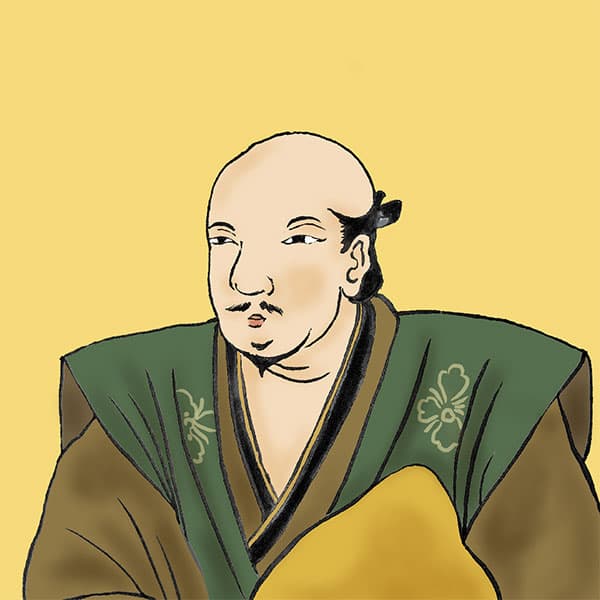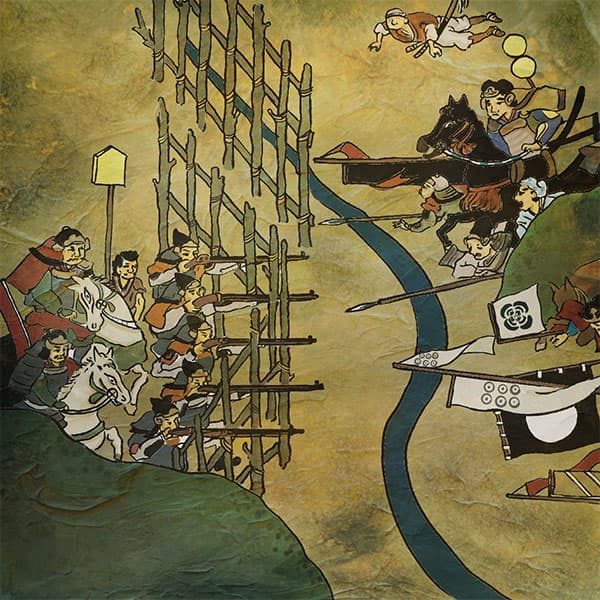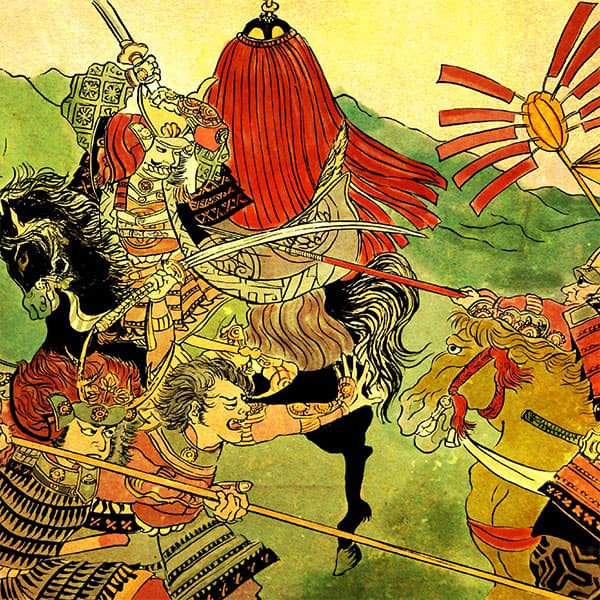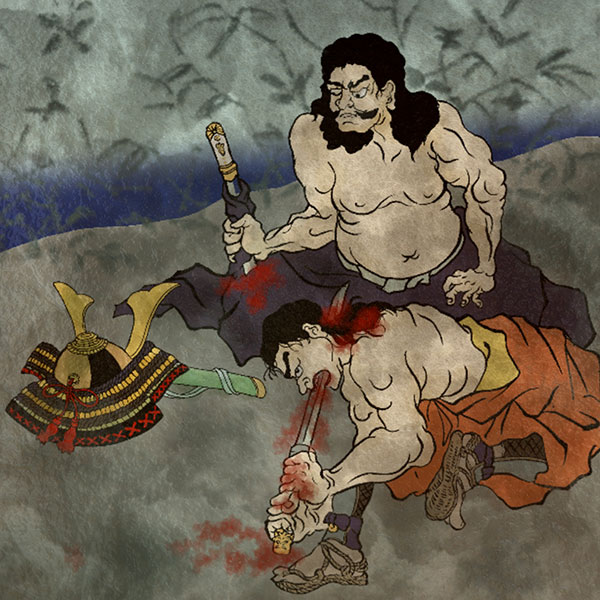Katsuyori Takeda (1/2)An excellent military commander who struggled after his great father.

Katsuyori Takeda
- Article category
- biography
- name
- Katsuyori Takeda (1546-1582)
- place of birth
- Yamanashi Prefecture
- Related castles, temples and shrines

Kofu Castle

Tsuchigasakikan
- related incident
Katsuyori Takeda was a Sengoku daimyo who was based in Kai and Shinano provinces from the Sengoku period to the Azuchi-Momoyama period.
His father was Takeda Shingen, and he was born as his fourth son. After taking over the Takeda family, he struggled to control the vassals left behind by his great father. He was also opposed by powerful feudal lords such as Oda Nobunaga of Owari and Tokugawa Ieyasu of Mikawa, and was defeated at the Battle of Nagashino.
This time I would like to introduce you to Katsuyori Takeda, a military commander with such a tragic fate.
Birth of Katsuyori Takeda
Katsuyori Takeda was born in 1546 as the fourth son of Shingen Takeda.
His mother was a Suwa retainer, the daughter of Yorishige Suwa, the feudal lord of Suwa, Shinano Province (near present-day Suwa City, Nagano Prefecture). It is believed that Katsuyori grew up with his mother at Tsutsujigasakikan.
His mother's family, the Suwa family, had an alliance with his father, Shingen, but the alliance was broken, Shingen invaded Suwa, and the Suwa clan was destroyed.
The Takeda clan began a full-scale invasion of Shinano and confronted the Uesugi clan in Echigo Province (present-day Niigata Prefecture), and after the Battle of Kawanakajima in 1562, the peace in Shinano came to a halt. Regarding control of Shinano, Harunobu took a conciliatory measure by sending his own children as adoptive families to the families that had previously ruled Shinano. Katsuyori's half-brother Morinobu Nishina inherited the Nishina family, and Katsuyori also inherited the name of his mother's family, the Suwa family, and was given the name Katsuyori Suwa Shiro.
Katsuyori Suwa became the lord of Takato Castle in Shinano, and began his life as a Sengoku warlord by supporting the Takeda family as a feudal lord with independent discretion.
His first battle was the attack on Minowa Castle in Ueno Province (present-day Gunma Prefecture) in 1563. Fujii Bungo, a vassal of the Nagano family, chased and killed him as he was returning from sightseeing. He also achieved great success in the subsequent attacks on Minowa Castle and Kuragano Castle. In addition, in 1569, Katsuyori is said to have clashed three spears with Ujiteru Hojo, the retainer of Morokayama Castle, during the siege of Takiyama Castle in Musashi Province (present-day Tokyo). In addition, he served as a lord during the retreat from the attack on Odawara Castle, and fought in single combat on horseback with Norihide Matsuda's retainer, Lieutenant Juzaemon Sakai. Katsuyori's personal courage and strength were outstanding, and he was an excellent military commander.
Yoshinobu Incident and Family Inheritance
In 1565, Takeda Shingen's eldest son, Yoshinobu Takeda, and his vassals, including Toramasa Iitomi, his vassal, plotted to assassinate Harunobu. However, the plan was exposed through a secret letter from Saburo Iidomi, Toramasa's younger brother, and Toramasa and his followers were executed as the masterminds of the rebellion, and Yoshinobu was also imprisoned.
At this time, Shingen had moved away from the traditional invasion of Shinano, to allying himself with the Oda clan and invading the Tokai area, which was ruled by the Imagawa clan.
However, a conflict arose with the pro-Imagawa faction centered around Yoshinobu, whose wife was the daughter of Yoshimoto Imagawa, who was killed in the Battle of Okehazama, and this was the reason for the assassination plan.
His second brother, Ryūho, became a priest because he was born blind, and his third brother, Nobuyuki, died young, so his fourth son, Katsuyori, was designated as his successor.
Katsuyori, who was originally not the eldest son and had inherited the Suwa family, decided to return to the Takeda family and take over. This will become one of the reasons why it will be difficult to control vassals later on.
However, the Takeda family, which had maintained friendly relations with the Oda family, participated in Shogun Yoshiaki Ashikaga's siege of Nobunaga along with various other forces, and broke off the alliance with the Oda family, starting the Westward Campaign in 1572. Did. Katsuyori also participated in the Nishigami operation, and in December fought against the Oda and Tokugawa combined forces at the Battle of Mikatagahara.
However, on April 12, 1573, Shingen died of illness during the Nishigami campaign.
Therefore, Katsuyori suddenly changed his surname from Suwa to Takeda, inherited the headship of the family, and became the 20th head of the Takeda family. Officially, Shingen's death was hidden and he retired, and Katsuyori inherited the headship of the family.
Battle of Nagashino
In 1573, Takeda Shingen died. With the death of Shingen and the withdrawal of the Takeda family, Oda Nobunaga and Tokugawa Ieyasu were revived.
Once Nobunaga was out of trouble, he exiled Yoshiaki Ashikaga, the 15th shogun of the Muromachi shogunate, to Kawachi Province, and destroyed the Asakura and Azai families who were anti-Oda. Ieyasu also tried to regain the power that the Takeda family had lost in the West, by turning Sadayoshi Okudaira, who had followed the Takeda clan, to his side.
Katsuyori, who inherited the Takeda family, invaded Mino Province (present-day Gifu Prefecture) and Totomi Province (present-day western Shizuoka Prefecture) from Shinano to resist the restoration of power by the Oda and Tokugawa families through military activities. .
In 1575, Katsuyori led 15,000 soldiers and invaded Mikawa Province to subjugate the Okudaira clan, which had defected to the Tokugawa clan. In May, Nobumasa Okudaira began an attack on Nagashino Castle, where he was barricaded. However, the Okudaira family, who had barricaded themselves in Nagashino Castle, showed tenacity and the siege took a long time.
Approximately 38,000 combined forces of the Oda and Tokugawa families arrived at Nagashino (Shitaragahara) and began constructing a castle, including a horse fence. In response, Katsuyori left his soldiers to hold down Nagashino Castle and led 12,000 men to advance to Shitaragahara and confront the Oda and Tokugawa combined forces. The morale of the Takeda army was high, as they had won the first battle, but due to the difference in military strength, there was a confusing debate over whether to fight a decisive battle or retreat. However, Katsuyori chooses a decisive battle.
The Battle of Nagashino begins around 6am on May 21st. Although the Takeda army was inferior in numbers, they boldly went on the offensive and attacked the Allied positions. Although they attempted several offensives, the Takeda army was completely defeated due to the difference in their military strength and being hit by a large number of guns. During this rout, the Oda family and the Tokugawa family pursued the Takeda family sharply, and they lost one after another the vassals who had supported the Takeda family.
Katsuyori was rescued by Sadatada Suganuma and temporarily holed up in Busetsu Castle, but eventually retreated.
With this defeat, the Takeda army suffered over 10,000 casualties.
The Oda family and the Tokugawa family did not pursue any more than necessary, and the Battle of Nagashino ended. Over the next several years, the Takeda family waged a back-and-forth battle with the Tokugawa family in Totomi Province and Suruga Province (present-day eastern Shizuoka Prefecture).
Odate Rebellion
After being defeated in the Battle of Nagashino, the Takeda family focused on diplomacy in order to rebuild. Therefore, he sought an alliance with the Uesugi family of Echigo Province (present-day Niigata Prefecture), which had been his enemy for many years. The relationship with the Uesugi family continued to be tense even after the Battle of Kawanakajima.
In 1575, Shogun Yoshiaki Ashikaga, who had been forced out of the capital, called for peace between the Takeda family, the Hojo family, and the Uesugi family. The Takeda family agreed to the offer because they were seeking a stable situation by forming an alliance with the Uesugi and Hojo families.
Although the Uesugi family did not oppose peace with the Takeda family, they expressed reluctance to make peace with the Hojo family. Although an alliance between the three families was not realized due to discord between Hojo and Uesugi, peace was established between Takeda and Uesugi, and the diplomatic situation was successfully improved.
However, three years later, in 1578, Uesugi Kenshin, the head of the Uesugi family, died of illness. Kenshin had no children, and the successor to the Uesugi family had not been determined. Two candidates come forward. They are Kagetora Uesugi (formerly Saburo Hojo), who was Ujimasa Hojo's younger brother and was adopted by Kenshin Uesugi, and Kagekatsu Uesugi, who was Kenshin's older sister's child and was adopted by Kenshin.
A fight broke out between these two over the headship of the family, known as the Otate Rebellion. Katsuyori was requested by Ujimasa Hojo to support his younger brother Kagetora, and Katsuyori himself dispatched troops to Echigo Province to try to mediate between Kagekatsu and Kagetora. During this time, Kagekatsu approached the Takeda family to make peace, and they accepted. Katsuyori made peace with Kagekatsu Uesugi and accepted the condition of the transfer of the Uesugi territory to the Takeda family, and at the same time continued to mediate peace with Kagetora's side, establishing peace between the two sides.
Katsuyori returned from Echigo as the Tokugawa family invaded Takeda territory. In the meantime, the peace between Kagekatsu and Kagetora broke down, and in 1579 the war ended with the victory of Kagekatsu Uesugi.
As a result, Katsuyori did not support either Kagekatsu or Kagetora. However, as Kagetora's support as requested by Ujimasa Hojo was not fulfilled, the Takeda family had a difficult relationship with the Hojo family, and the alliance broke down.
Battle of the Tokugawa and Hojo clans
Katsuyori Takeda formed an alliance with the Uesugi family in order to oppose the Oda family and the Tokugawa family, but relations with the Hojo family deteriorated.
In April 1579, Katsuyori dispatched his troops to Suruga-Ejiri Castle and confronted the Tokugawa family. In July, they also advanced to Higashiueno (present-day Gunma Prefecture) and faced off against the Hojo family.
While Katsuyori was confronting the various powers, the situation worsened.
In September 1579, an alliance was formed between Tokugawa and Hojo, and Hojo Ujimasa invaded Mishima from Numazu, and Ieyasu also agreed with Ujimasa and dispatched troops to Takeda territory.
On the other hand, the following year in 1580, Katsuyori dispatched troops to confront the Hojo and Tokugawa families.
As the Takeda family sent troops out of Kai-Shinano every year, dissatisfaction built up among the Takeda family's vassals.
Katsuyori's death
In 1581, Katsuyori built Shinpu Castle (currently Nirasaki City, Yamanashi Prefecture) and began relocating his headquarters.
- related incident

- WriterTomoyo Hazuki(Writer)I have loved history and geography since my student days, and have enjoyed visiting historical sites, temples and shrines, and researching ancient documents. He is especially strong in medieval Japanese history and European history in world history, and has read a wide range of things, including primary sources and historical entertainment novels. There are so many favorite military commanders and castles that I can't name them, but I especially like Hisashi Matsunaga and Mitsuhide Akechi, and when it comes to castles, I like Hikone Castle and Fushimi Castle. Once you start talking about the lives of warlords and the history of castles, there's a side of you that can't stop talking about them.







